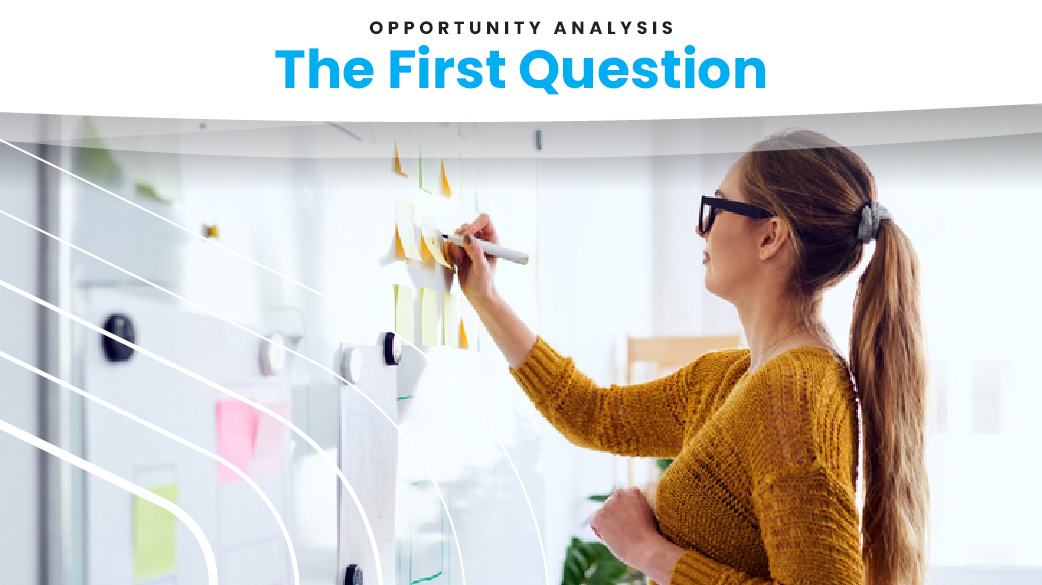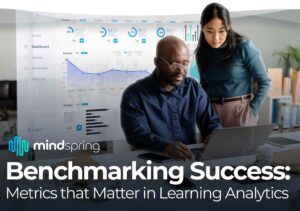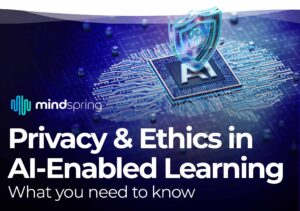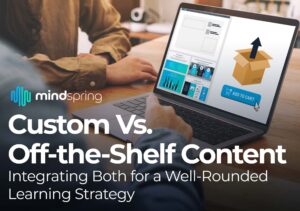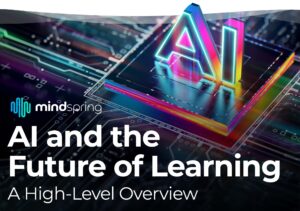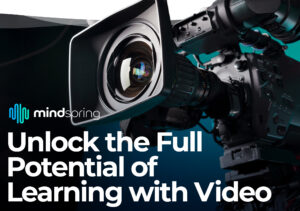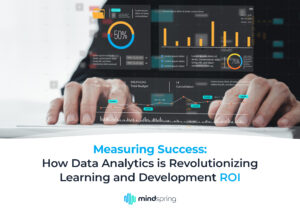Story Introduction
Kathryn is the Chief Learning Officer at a fictional manufacturing company called AshCom, located in Minneapolis. Kathryn has been the CLO for more than five years and, with her team, has produced some amazing learning experiences. But things are changing fast. Rebecca is a consultant from MindSpring who has served as an advisor to Kathryn for the last four years. This is their story.
Kathryn, the Chief Learning Officer at AshCom and Rebecca, her trusted advisor from MindSpring, sat at the conference table in Kathryn’s office. On the whiteboard was a list of eleven questions written by Rebecca, who promised that these questions would help provide clarity on some of the challenges.
AshCom’s learning challenges were significant and started with declining results in training. Learners were learning less and making fewer behavioral adjustments in their daily work. Fewer people were voluntarily taking courses. Something was changing.
Just as Kathryn and her learning team began to notice these shifts, the CFO announced a hiring freeze for every division in the 7,000-person company. That news unsettled a lot of people, including Alishia who worked for Kathryn. Alishia was the youngest member of the team but was the most experienced in technology and learning. Two weeks after the hiring freeze, Alishia announced she was leaving for a better position outside of manufacturing. Kathryn held a small party to thank her for her fine work and wished her well, but she knew that the loss of Alishia would affect what her learning team could accomplish.
The financial performance of AshCom did not improve. The CFO stopped by her office one day and told Kathryn she needed to make reductions. She had to let people go. She had done this before but found the experience deeply painful. She understood the reasons, but it was the last thing she wanted to do because she knew it would impact both personal relationships and her team’s performance. Her team had gone from ten very capable people who functioned well as a group to seven people who were unsure of what the future might hold for them.
Kathryn called in Rebecca to help, and she immediately got to work. She introduced the eleven questions on the board and promised Kathryn they would help her find clarity and build a pathway for moving forward.
The first question was,
“What are your top company priorities right now, and how will learning play a pivotal role in achieving them?”
After Rebecca read the question aloud, Kathryn smiled. “You know that’s actually two questions, right?”
Rebecca had grown to appreciate Kathryn’s sense of humor and gave as good as she got. “I won’t disagree, but I would think someone in as much trouble as you would recognize that they are connected.”
“Touché ,” said Kathryn. “Can you give me some sense of why you want to begin here and maybe specifics on what you’re asking?”
“Here’s what I can tell you,” replied Rebecca. “Some of my clients have this all prepared and can move quickly to the other questions. They know their organization’s goals and how they can provide learning that will help achieve those goals. In those instances, we don’t spend much time on question one. They are more interested in moving quickly to accomplish their goals.”
“But that’s not AshCom as the moment,” said Kathryn.
“No, it isn’t,” said Rebecca. “Nor is it your learning team. And truthfully, it’s not you right now. If you were prepared to answer that question, we would be having a very different conversation. Your team has lost thirty percent of its people. Morale is low. The future is uncertain. You need a place to begin, and right now I believe this is an essential question for you.”
“Unvarnished truth,” said Kathryn.
“No other kind,” said Rebecca. “Getting an answer will take some work. It will likely involve your peers in the C-Suite. You will need to have some hard conversations with your colleagues and push them to be clear about where they see this company going. You mentioned your CFO. You will also need some time with your CEO and the head of human resources.”
“What, specifically, are these conversations meant to clarify?” asked Kathryn.
“The key word is going to be alignment,” replied Rebecca. “When a company has a lot of chaos and uncertainty, it’s a given that people have very different opinions on which direction is the right one. If your learning team allies itself with the wrong objectives, you’ll have a miss when other stakeholders make their ideas known. And they will.”
“And probably at the worst possible time,” replied Kathryn.
“Of course,” said Rebecca. “What you’re looking for is clarity and alignment around the big objectives for AshCom, both near term and long term. Once you’ve done that, we can start talking about learners and learning. Do you know the goals of the company for the next three to six months? Or one to three years?”
“We haven’t given that a lot of thought lately,” said Kathryn with a heavy sigh. “We just haven’t had time for it. Mostly I’ve been focused on keeping morale up on my team and delivering the learning experiences as best we can given the circumstances.”
“I get that,” said Rebecca. “What I’m asking you to do is to lift your eyes to the horizon a little more. Have some conversations. Set some meetings with the people whose opinions you need to know.”
“Ok,” said Kathryn. “I’ll make that a priority and then circle back with you on what I hear. What happens after that? Are we done with question one?”
“Nope,” said Rebecca. “As you pointed out, this is a two-part question. The second part is how your learning team will contribute to achieving the goals. This will be a series of assessments that you need to do, and I’ll help you with that.
The point is to figure out what skills and knowledge AshCom currently possesses, what skills and knowledge are needed to achieve the goals, and then clearly identify that gap.”
“Because knowing that gap tells us where to focus our attention,” said Kathryn. Things were coming into focus. “We need to look for gaps in our curriculum.”
“Not yet,” replied Rebecca. “The gap you want to understand first is the skills and knowledge gap. Your human resources people will help you there. So will some of the leaders in operations. You have to dig down to understand the biggest challenges because those will also be the biggest opportunities.”
Rebecca continued, “We need to assess learners in relation to AshCom’s shared vision, beliefs, and objectives. We need know if there are common needs across every plant, division, and department. What’s been working? What’s not working? Are there barriers to learning?”
“Sounds like we’re getting into some of the other questions,” said Kathryn.
“We certainly are,” said Rebecca. “These are separate questions, but I want you to see how they fit together and why they’re in this order.”
“I get it,” said Kathryn. “The connections between and order of the questions made sense to me as soon as you wrote them on the whiteboard.”
“Let me do a little summarizing,” said Rebecca. “We’re going to start with the big objectives of AshCom in the coming months and years. Next, we’ll look at how well that aligns with your current learning plans. We ‘ll look for places skills and knowledge are lacking. This information should begin to clarify your ideal outcomes— if you act on it.”
“Now that’s a conversation I’d love to have soon,” said Kathryn, “but I understand this is a process that will take some time. It really is a discovery process, isn’t it?”
“Yes,” said Rebecca. “We will uncover some assumptions. You will find several untested and unproven hypotheses.”
“This might be one of our core struggles,” said Kathryn. “We’re not aligned. Mostly, we’re focused on stopping the financial bleeding. We need to get to a clear, broad, and inclusive vision.”
“The others on your leadership team are probably thinking about this already,” said Rebecca. “You just need to work with them to help you connect it to learning plans.”
“So how do we begin? Do we start today?” asked Kathryn.
“I love your enthusiasm, but we still have 11 questions to review,” said Rebecca. “But I can give you a sense of the process for answering this first question. My team and I will work with you. When the process is complete, we will deliver an opportunity analysis report of findings and review it with you. You will need your team’s buy-in. Actually, we’ll likely engage several members of your team, and we’ll begin with identifying the key stakeholders and move forward from there.”
“Works for me,” said Kathryn. “Can we take a quick break and then dive into the second question? I need a few minutes to catch up on emails.”
“So do I,” said Rebecca. “I’ll be back in 15 minutes.”
Kathryn glanced at the whiteboard. She felt more comfortable with the next question: Who are the targeted learners, and how well do you know them?”
Interested in learning more from our thought leaders perspective?
Related Articles
Article 3: Who are the targeted learners and how well do you know them?
Article 4: Do your learners care about learning and how does learning connect with their goals?
Article 5: What organizational factors are influencing your learning initiatives?
Article 6: How will get your learners’ attention and build momentum for learning?
Article 8: How are you measuring the impact of learning on your organization?
Article 9: How are you keeping current or ahead of the curve in the learning industry?
Article 10: How are you upskilling your learning team?
Article 11: How will you meet your objectives without adding full-time team members?
Article 12: What is your 3–5-year plan for learning in your company?
